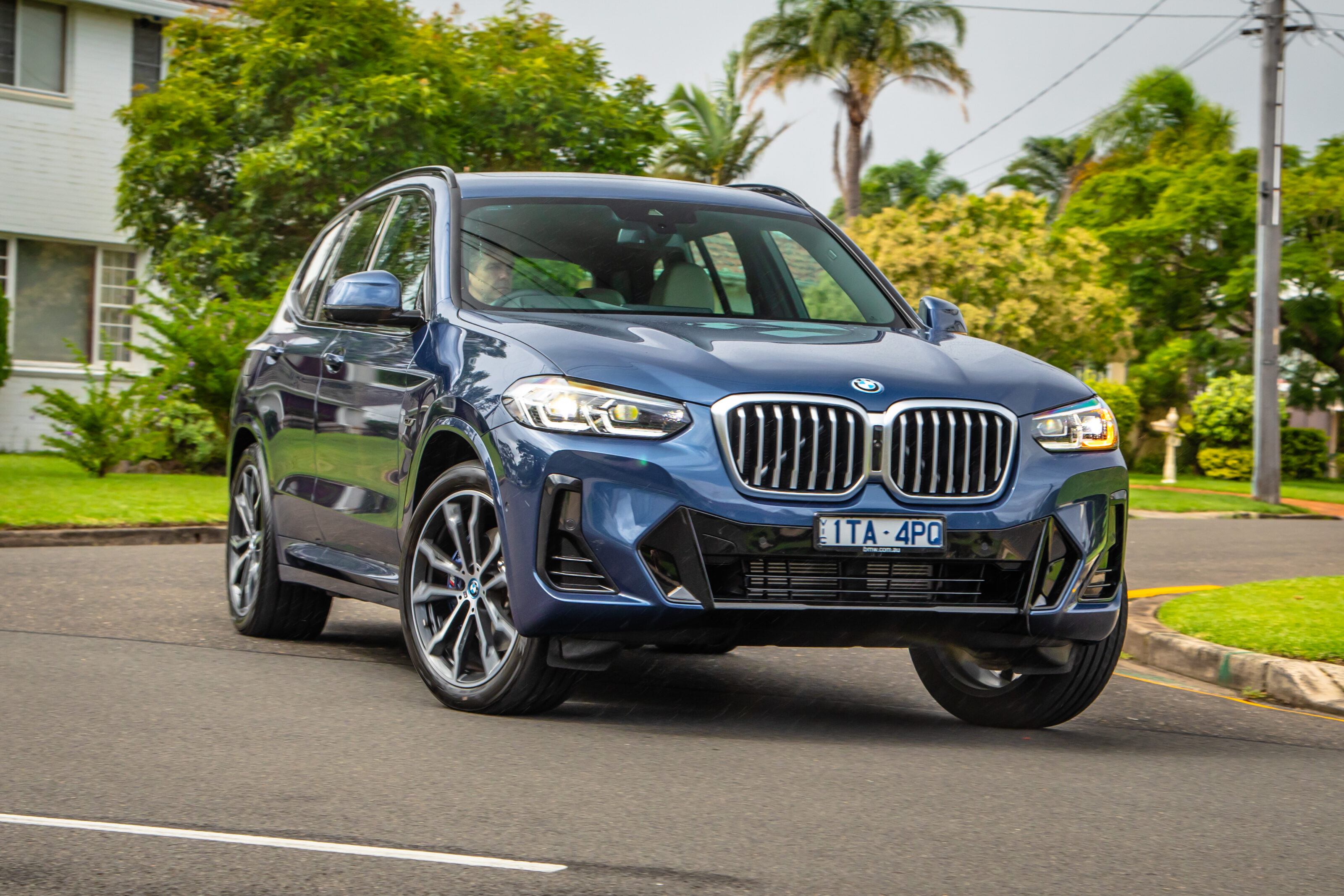Score breakdown
Things we like
- Good electric/hybrid handover
- Fuel and battery efficiency
- Build quality
Not so much
- Hefty price
- Compromised load area
- Under-servoed brakes
- Paranoid parking assistance
With the exception of a milk float my brother and I unintentionally carjacked when I was about eight, BMW’s i3 was the first production electric vehicle I drove and, at the time, I realised EVs themselves are not the problem. The German carmaker’s sophisticated five-door proved that the vehicle was no longer the missing part of the equation and, although there were still many components yet to add before battery power reached tipping point, I could live with BMW’s foray.
The truth was and still is, however, that while the range, choice and supporting infrastructure of electric vehicles has progressed in the ensuing eight years, a vehicle powered exclusively by a battery is not quite feasible as the only car on the driveway for many. What BMW and many other brands have identified, is that there’s a middle ground between pure combustion power and pure battery with potential to be tapped.
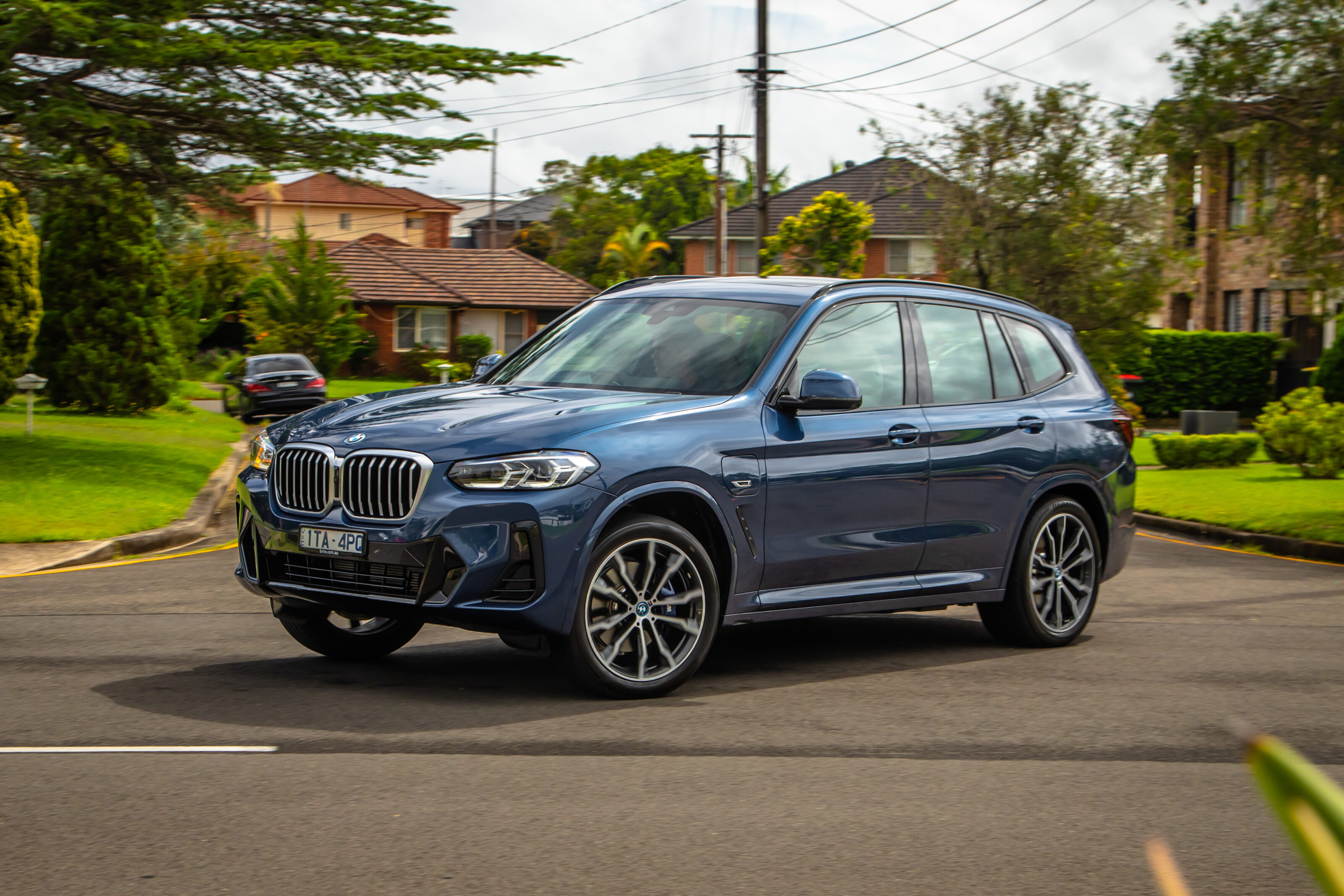
That’s where this car comes in. Unlike the i3 which could be bought as a range-extended hybrid, the new BMW X3 xDrive 30e is a more mainstream plug-in hybrid, meaning it can be charged at home and driven about 41km using its 12kWh battery alone. After that, a 2.0-litre turbo-petrol four-cylinder takes over for a more conventional driving experience.
This particular variant is therefore two X3s in one. It has essentially the same engine and transmission as the entry-level sDrive 20i but with xDrive all-wheel drive, and a little of the new pure-electric iX3’s soul albeit packing a significantly reduced zero-emissions range.
This variant is two X3s in one – essentially the same engine and transmission as the sDrive 20i, all-wheel drive, and a little of the pure-electric iX3’s soul

BMW claims that range to be 41km and while some other manufacturers’ models require a hypermile driving style to achieve their claimed figures, that’s not the case in the X3. We managed exactly 40km before needing a recharge when driving mostly on suburban roads where there’s minimal drag on the boxy body and the effect of regenerative braking can be maximised.
Regen is mild and the hybrid powertrain seems to favour more efficient coasting rather than trying to recapture power that’s already been spent and we particularly like how the calibration only resorts to supplementary petrol power as a last resort. Unlike some milder hybrids, most of our driving was with the engine off and that was without having to switch from the default drivel mode to pure electric.

The various driving modes are easily accessed through hard buttons rather than having to scroll through a list or dive into submenus. Our favourite was Sport with XtraBoost, which was sufficiently aggressive to get the most out of the X3’s well-tuned chassis.
A firm ride was easy to live with and while the steering is a little numb it’s direct nonetheless, while the previously dormant engine wakes up with a satisfying, purposeful note.
Acceleration has a good sense of urgency even in pure electric mode, while the full combined effect of petrol and electric working in unison is strong and linear. Its full 215kW and 420Nm output is the most available from a combustion-powered X3 without straying into the coveted M Power family and is good for a zero to 100km/h dash in 6.1 seconds.
The eight-speed automatic transmission also deserves praise with a deft calibration that works wonderfully with the changing electric and hybrid power delivery.
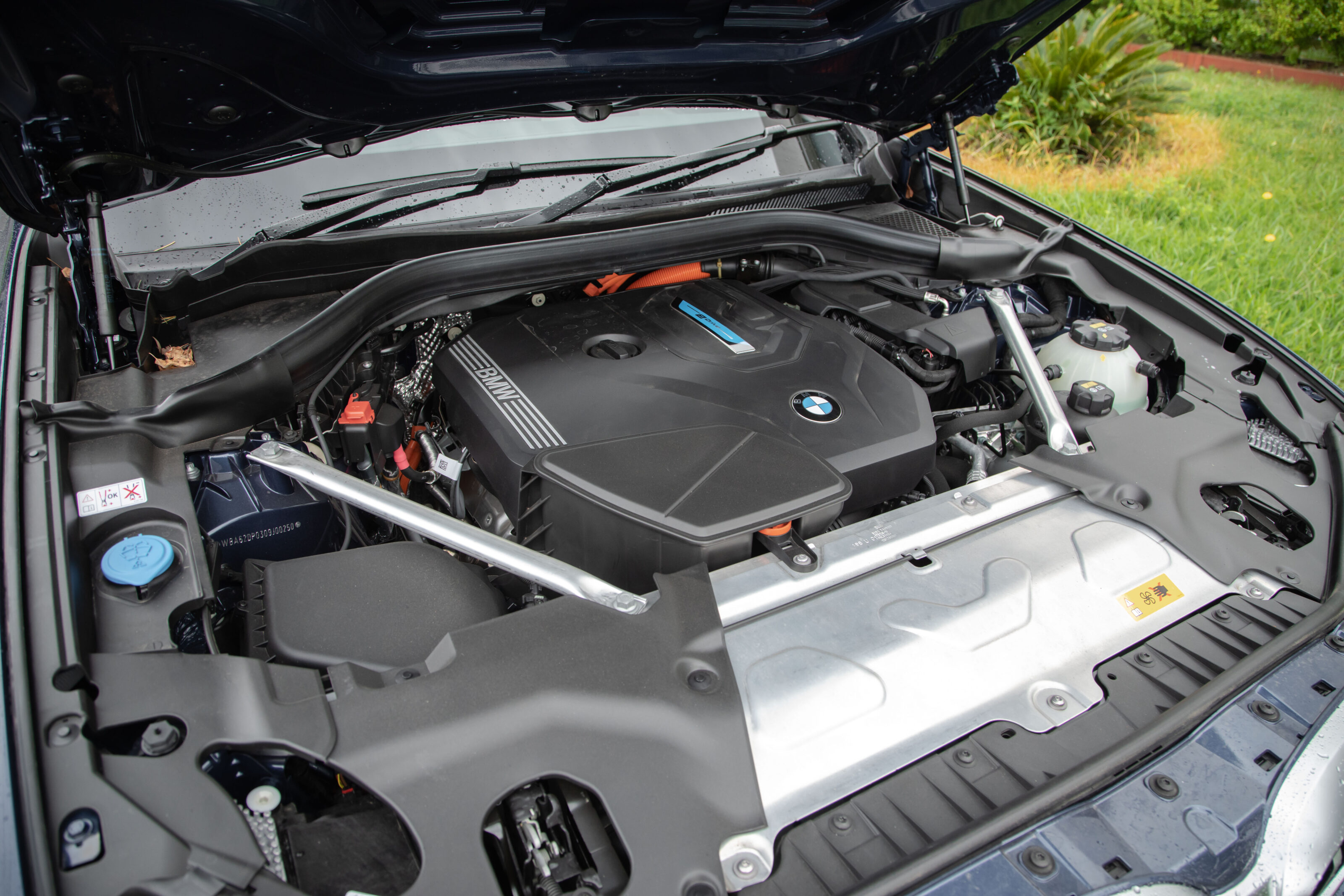
When it comes to economy, the focus with this car was more on functionality of the hybrid system than overall figures on paper, but during our short time with the X3, its engine mostly fired when the full dose of performance was required and the car was returned with an indicated 560km of total range remaining in the 50-litre tank. That’s pretty good by any scale.
Perhaps related to the mild regenerative braking was a slightly weird-feeling pedal that seems under-assisted until the vehicle is almost at a standstill, at which point the braking becomes more aggressive. As a result, it’s hard to drive the 30e smoothly at low speeds and in stop-start traffic.
Acceleration has a good sense of urgency in pure electric mode, while the combined effect of petrol and electric in unison is strong and linear

Technologically though, the 30e really stands out. Its cabin is well-appointed and beautifully designed, your eye drawn to the impressive digital displays first. There’s a whopping 12.3-inch screen for the central information and entertainment systems, while the driver gets a second equally sharp 10.3-inch Live Cockpit Professional screen for instrumentation.
The X3 wasn’t quite late enough for the next generation of BMW’s excellent iDrive operating system, but version 7 is still crisp and intuitive. Enough options and controls are available through submenus but none of the most frequently accessed functions, which thankfully are confined to buttons on the dash, centre console and steering wheel.
A massive head-up display complements the digital screens with full colour and heaps of information options via a customisation menu, while ambient lighting lifts the cabin feel and sophistication after dark. The parking assistance was the only black mark on the comprehensive list of tech with operation that was far too paranoid to be useful in a lot of instances.
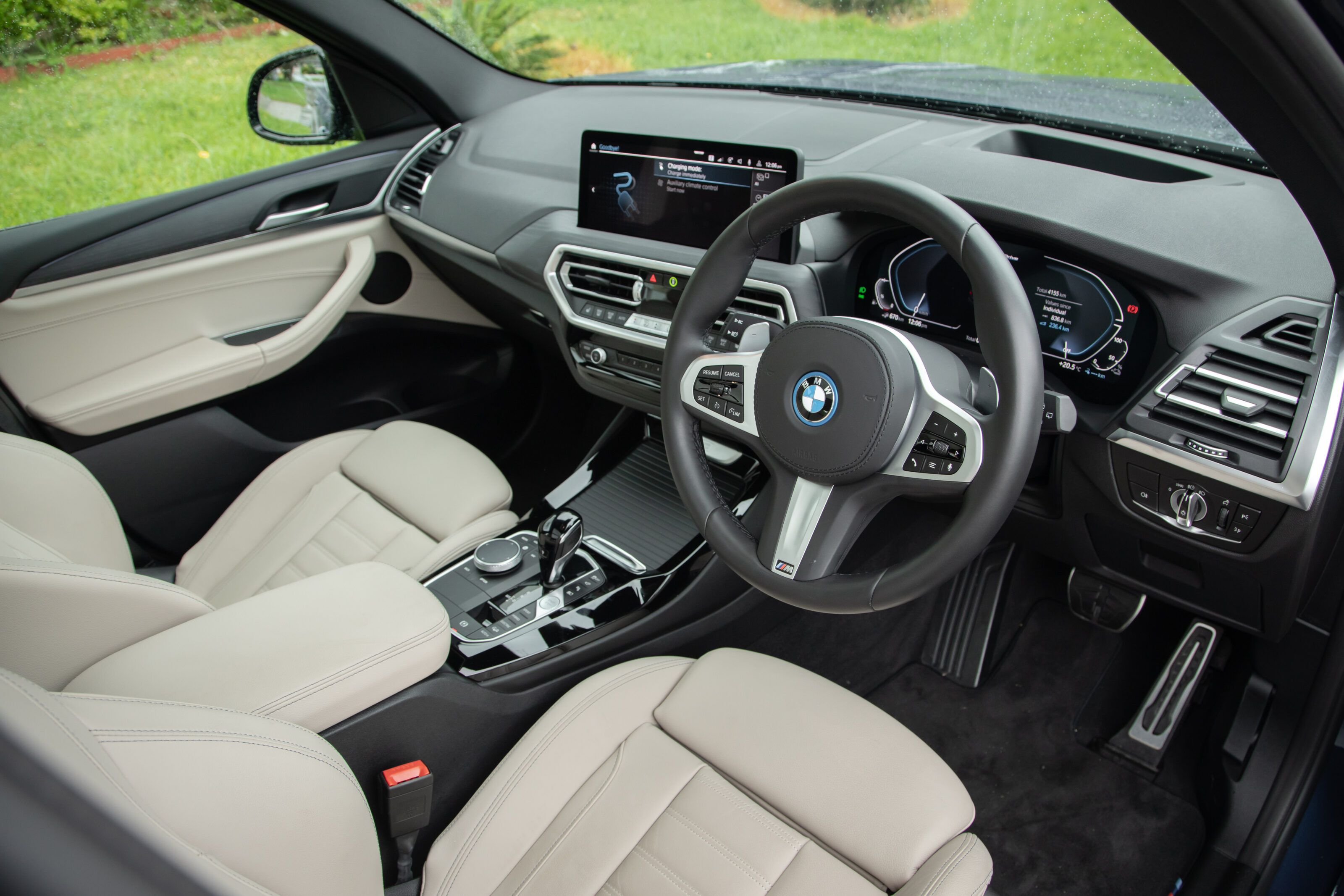
Practically, the 30e has virtually all of the ‘standard’ X3’s virtues with a decent second row for adults and a good scattering of charging and storage options.
The boot is the only compromised point, with volume shrinking by a significant 100 litres to 450L. The raised boot floor also makes it possible for items to fall out when the electric tailgate is opened if they have moved in transit.
That aside, the X3 is a vehicle that has been comprehensively thought out and its hybridisation doesn’t feel like an afterthought clumsily thrown into the line-up between the petrols, diesels and the EV.
Its chassis feels as though it was developed specifically for the extra weight of 2065kg, the engine and transmission are well programmed for the electric assistance and the styling is subtle but nods at something a little different going on under the bonnet.
Oh, and the option to leave the air-conditioning running even when the car is switched off is another very welcome feature during the most savage summer months. Coming back to a cool cabin after a short shopping trip is a trick we would never tire of.
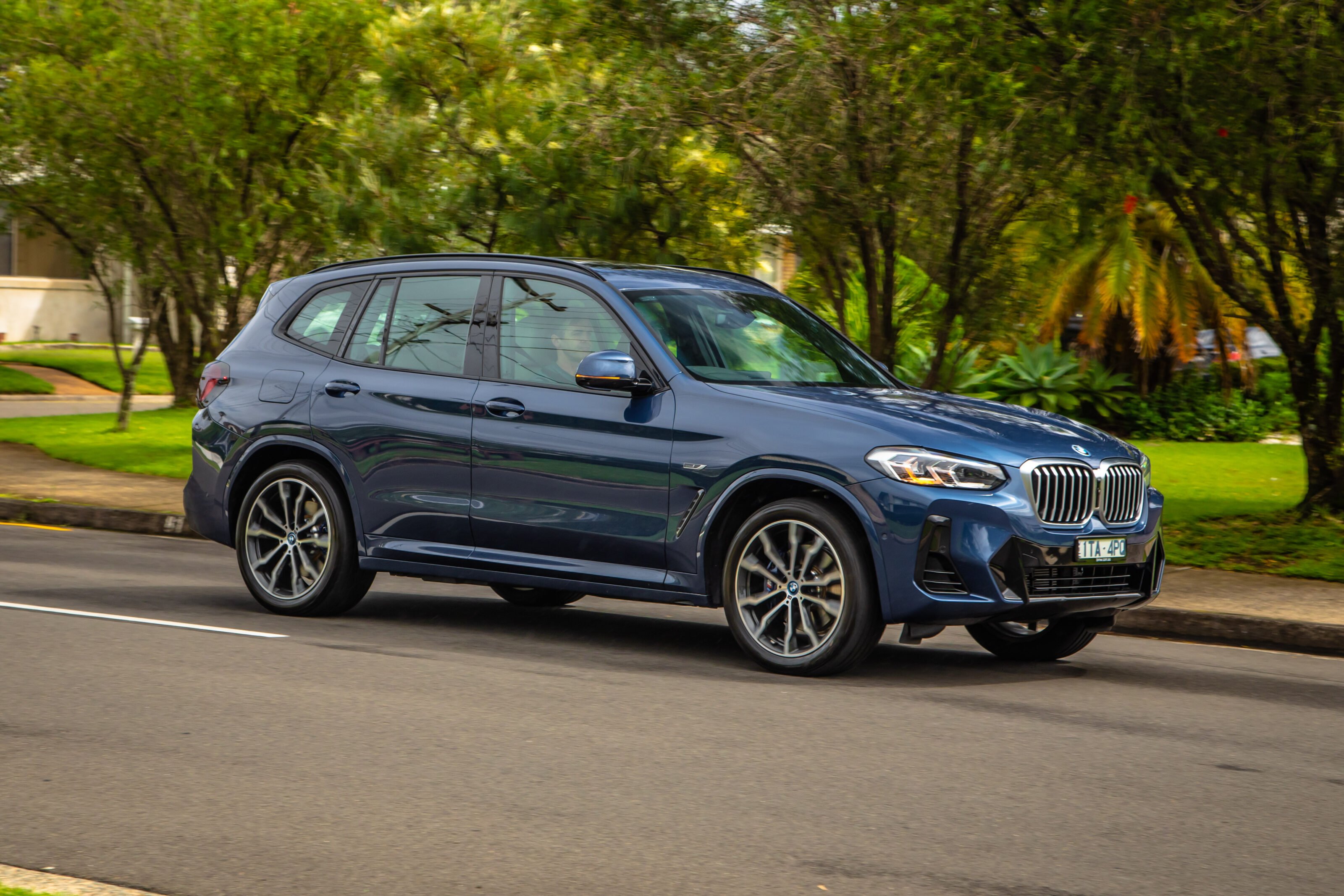
It might appear, therefore, that the xDrive 30e is the X3 largely without compromise but that’s not quite the case.
With any plug-in, you’re still paying for a full engine and drivetrain similar if not identical to petrol-only versions, but with the added cost of the electric parts too, which is why the starting price for BMW’s PHEV X3 is a hefty $104,900 before on-road costs.
As for alternatives, the 30e almost has the stage to itself. The only threat in the segment comes from Mercedes-Benz which offers a plug-in version of its GLC with a suspiciously similar 300e boot badge. Opt for the Merc and you’ll get a similar package but for a price that’s more than $9000 cheaper.
For fans of the X3 with just one parking spot, its pure electric range is perfect for negotiating suburbia but has the legs for an occasional getaway
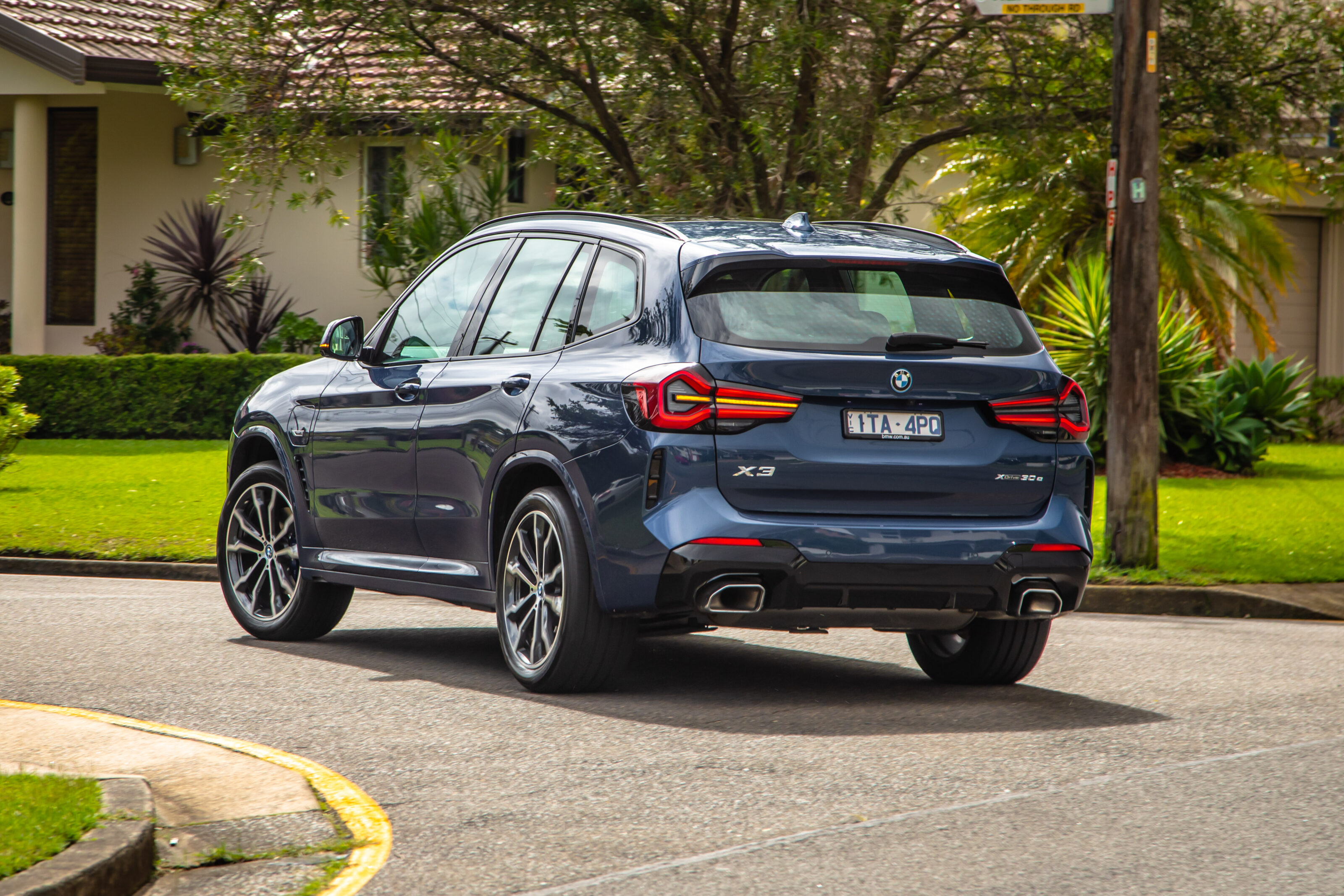
The value proposition is even harder to balance when you consider the full-electric iX3 is ‘only’ 10 per cent more expensive, priced from $114,900 plus on-road costs.
Ownership costs don’t help either. The plug-in will still need oils and filters when it’s time to service and cop rising fuel prices whenever a top-up is necessary, while the more expensive EV version has a cheaper servicing schedule along with the potential to save on electricity costs using home solar and power walls, for example.
So who is the X3 30e for? A majority of PHEV owners of all kinds learn fairly quickly that even the relatively limited pure electric range is more than enough for their weekly commute, and an EV with a longer range would actually suit their lifestyle.
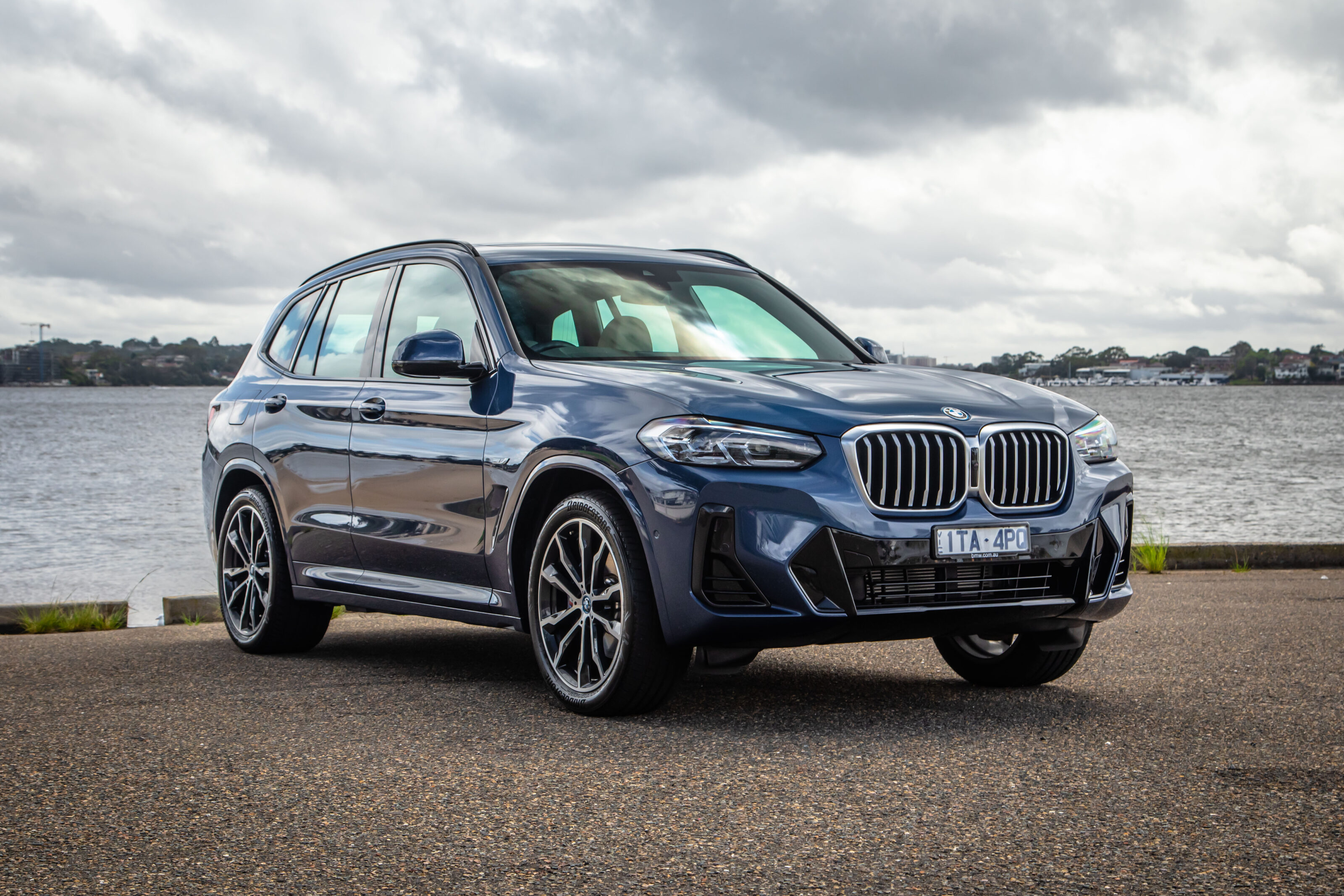
If you like what the X3 model has to offer but haven’t yet decided whether it’s time to make the switch to electric, the 30e is an expensive way to make up your mind, but the plug-in certainly still does have a place.
For fans of the X3 with just one parking spot, including inner-city dwellers and residents in other high-density areas, its pure-electric range is perfect for negotiating suburbia but still has the legs of petrol power for an occasional getaway.
Add to that almost exactly the same practicality proposition of the petrol and diesel X3 variants, as well as the xDrive advantages to take you further.
There are multiple compelling sides to the plug-in X3’s personality if you’re still sitting on the fence between electric and combustion power, but its versatility comes at a cost.
Score breakdown
Things we like
- Good electric/hybrid handover
- Fuel and battery efficiency
- Build quality
Not so much
- Hefty price
- Compromised load area
- Under-servoed brakes
- Paranoid parking assistance
We recommend
-
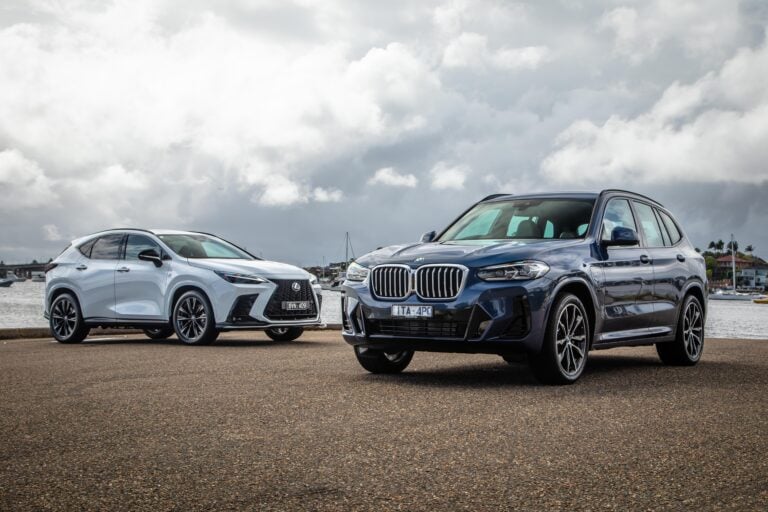 Reviews
Reviews2022 BMW X3 30e vs Lexus NX450h+ F Sport comparison review
Plug-in hybrid finally arrives in a Lexus while BMW adds it to the X3 range. Are they worth the extra or are they a rapidly irrelevant technology?
-
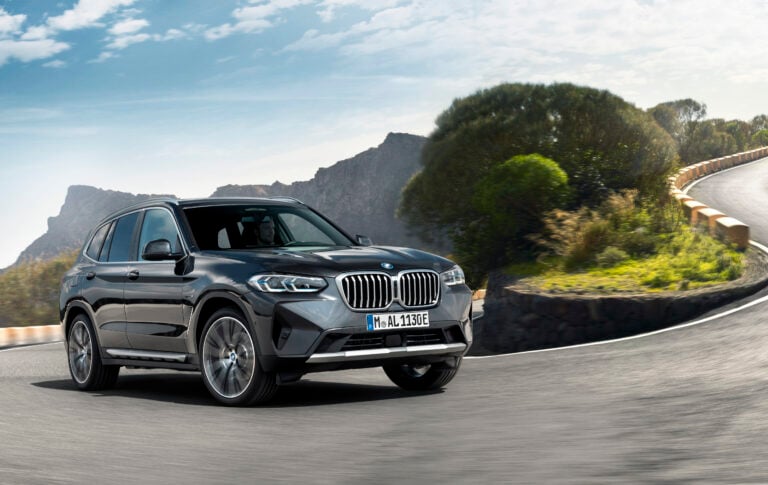 News
NewsBMW X3 and X4 pricing revealed - UPDATE
Popular mid-size SUV scores new looks, more tech, and safety
-
 Reviews
ReviewsAudi Q5 45 TFSI vs BMW X3 30i xDrive
Popular luxury mid-size SUVs head-to-head


